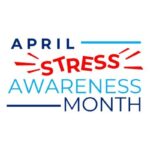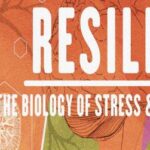Steroids
Brief Description
 “Anabolic steroids” is the familiar name for synthetic variants of the male sex hormone testosterone. The proper term for these compounds is anabolic-androgenic steroids (abbreviated AAS)—“anabolic” referring to muscle-building and “androgenic” referring to increased male sexual characteristics.
“Anabolic steroids” is the familiar name for synthetic variants of the male sex hormone testosterone. The proper term for these compounds is anabolic-androgenic steroids (abbreviated AAS)—“anabolic” referring to muscle-building and “androgenic” referring to increased male sexual characteristics.
Anabolic steroids can be legally prescribed to treat conditions resulting from steroid hormone deficiency, such as delayed puberty, as well as diseases that result in loss of lean muscle mass, such as cancer and AIDS. But some athletes, bodybuilders, and others abuse these drugs in an attempt to enhance performance and/or improve their physical appearance.
Steroids are typically taken intermittently rather than continuously, both to avert unwanted side effects and to give the body’s hormonal system a periodic chance to recuperate. Continuous use of steroids can decrease the body’s responsiveness to the drugs (tolerance) as well as cause the body to stop producing its own testosterone; breaks in steroid use are believed to redress these issues. “Cycling” thus refers to a pattern of use in which steroids are taken for periods of weeks or months, after which use is stopped for a period of time and then restarted.
In addition, users often combine several different types of steroids and/or incorporate other steroidal or non-steroidal supplements in an attempt to maximize their effectiveness, a practice referred to as “stacking.”
However, long-term steroid use can affect some of the same brain pathways and chemicals—including dopamine, serotonin, and opioid systems—that are affected by other drugs, and thereby may have a significant impact on mood and behavior.
Abuse of anabolic steroids may lead to aggression and other psychiatric problems, for example. Although many users report feeling good about themselves while on steroids, extreme mood swings can also occur, including manic-like symptoms and anger (“roid rage”) that may lead to violence. Researchers have also observed that users may suffer from paranoid jealousy, extreme irritability, delusions, and impaired judgment stemming from feelings of invincibility.
Individuals who abuse steroids can experience withdrawal symptoms when they stop taking them—including mood swings, fatigue, rest-lessness, loss of appetite, insomnia, reduced sex drive, and steroid crav-ings, all of which may contribute to continued abuse. One of the most dangerous withdrawal symptoms is depression—when persistent, it can sometimes lead to suicide attempts. Research has found that some steroid abusers turn to other drugs such as opioids to counteract the negative effects of steroids.

Effects
 Case reports and small studies indicate that anabolic steroids, when used in high doses, increase irritability and aggression. Some steroid abusers report that they have committed aggressive acts, such as physical fighting or armed robbery, theft, vandalism, or burglary. Abusers who have committed aggressive acts or property crimes generally report that they engage in these behaviors more often when they take steroids than when they are drug free. A recent study suggests that the mood and behavioral effects seen during anabolic-androgenic steroid abuse may result from secondary hormonal changes.
Case reports and small studies indicate that anabolic steroids, when used in high doses, increase irritability and aggression. Some steroid abusers report that they have committed aggressive acts, such as physical fighting or armed robbery, theft, vandalism, or burglary. Abusers who have committed aggressive acts or property crimes generally report that they engage in these behaviors more often when they take steroids than when they are drug free. A recent study suggests that the mood and behavioral effects seen during anabolic-androgenic steroid abuse may result from secondary hormonal changes.
Health Concerns
Steroid abuse may lead to serious, even irreversible, health problems. Some of the most dangerous consequences that have been linked to steroid abuse include kidney impairment or failure; damage to the liver; and cardiovascular problems including enlargement of the heart, high blood pressure, and changes in blood cholesterol leading to an increased risk of stroke and heart attack (even in young people).
Steroid use commonly causes severe acne and fluid retention, as well as several effects that are gender- and age-specific:
For men – shrinkage of the testicles (testicular atrophy), reduced sperm count or infertility, baldness, development of breasts (gynecomastia), increased risk for prostate cancer
For women – growth of facial hair, male-pattern baldness, changes in or cessation of the menstrual cycle, enlargement of the clitoris, deepened voice
For adolescents – stunted growth due to premature skeletal maturation and accelerated puberty changes, and risk of not reaching expected height if steroid use precedes the typical adolescent growth spurt
In addition, people who inject steroids run the added risk of contracting or transmitting HIV/AIDS or hepatitis.
Source: NIDA (National Institute on Drug Abuse)










